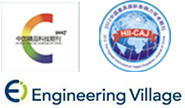column
2014, 31(6): 1383-1393.
2014, 31(6): 1394-1401.
2014, 31(6): 1402-1408.
2014, 31(6): 1422-1427.
2014, 31(6): 1428-1435.
2014, 31(6): 1436-1445.
2014, 31(6): 1446-1451.
2014, 31(6): 1452-1456.
2014, 31(6): 1457-1466.
2014, 31(6): 1467-1475.
2014, 31(6): 1476-1480.
2014, 31(6): 1490-1496.
2014, 31(6): 1503-1508.
2014, 31(6): 1509-1515.
2014, 31(6): 1516-1524.
2014, 31(6): 1532-1542.
2014, 31(6): 1566-1572.
2014, 31(6): 1573-1580.
2014, 31(6): 1581-1587.
2014, 31(6): 1604-1611.
2014, 31(6): 1612-1617.
2014, 31(6): 1618-1625.
2014, 31(6): 1626-1634.

